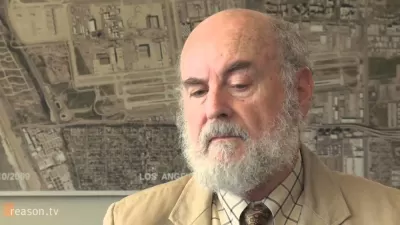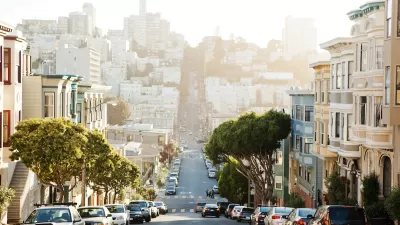San Francisco's voters are continuing their trend of deciding complex and difficult planning issues at the ballot box. Last time it was height restrictions—this time it's parking.
Kim-Mai Cutler's early coverage of San Francisco's so-called "Restoring Transportation Balance" initiative trades on the proposition's famous financial support—Sean Parker of Napster and Facebook fame. Parking policy wonks will find more distressing news in the details of Proposition L, which Cutler describes as "pro-parking and pro-car."
Among the policy changes at stake in the initiative (as quoted from the text of the initiative [pdf]), which will appear before San Francisco voters in November:
- "Commencing July 1, 2015, fees for parking garages, meters, parking tickets, and neighborhood parking permits should be frozen for five years, allowing the City to annually adjust thereafter only for Consumer Price Index (CPI) increases."
- "The introduction of parking meters or variable meter pricing into neighborhoods where they currently do not exist should be allowed only upon petition by the majority of the affected households and merchants."
- "A portion of any additional parking or motorists’ fees and new bond monies earmarked for the San Francisco Municipal Transportation Agency (SFMTA) should go to the construction and operation of neighborhood parking garages."
Cutler goes on to state in no uncertain terms that free parking is bad policy, and provides a few of the arguments that back up the claim. The comments on the article, however, show that Shoup isn't exactly a household name in San Francisco.
Aaron Bialick is providing updates on SF Streetsblog about the gathering political opposition to the initiative, most recently in a resounding rejection of the initiative by the SF Democratic County Central Committee. Bialick also reported that the "No on L" campaign is leading with the tagline "Do you really want more gridlock?"
FULL STORY: DCCC Joins Quickly Growing Opposition to Cars-First Prop L

Planetizen Federal Action Tracker
A weekly monitor of how Trump’s orders and actions are impacting planners and planning in America.

Maui's Vacation Rental Debate Turns Ugly
Verbal attacks, misinformation campaigns and fistfights plague a high-stakes debate to convert thousands of vacation rentals into long-term housing.

San Francisco Suspends Traffic Calming Amidst Record Deaths
Citing “a challenging fiscal landscape,” the city will cease the program on the heels of 42 traffic deaths, including 24 pedestrians.

Amtrak Rolls Out New Orleans to Alabama “Mardi Gras” Train
The new service will operate morning and evening departures between Mobile and New Orleans.

The Subversive Car-Free Guide to Trump's Great American Road Trip
Car-free ways to access Chicagoland’s best tourist attractions.

San Antonio and Austin are Fusing Into one Massive Megaregion
The region spanning the two central Texas cities is growing fast, posing challenges for local infrastructure and water supplies.
Urban Design for Planners 1: Software Tools
This six-course series explores essential urban design concepts using open source software and equips planners with the tools they need to participate fully in the urban design process.
Planning for Universal Design
Learn the tools for implementing Universal Design in planning regulations.
Heyer Gruel & Associates PA
JM Goldson LLC
Custer County Colorado
City of Camden Redevelopment Agency
City of Astoria
Transportation Research & Education Center (TREC) at Portland State University
Jefferson Parish Government
Camden Redevelopment Agency
City of Claremont





























